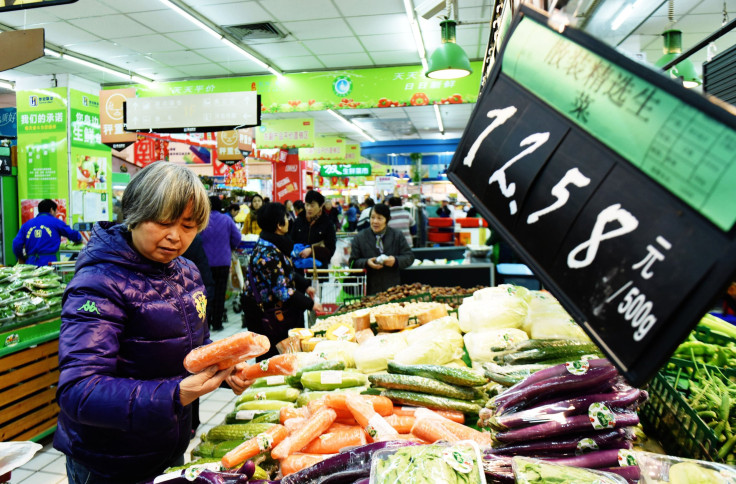China Likely To Post Lowest Quarterly Economic Growth In Almost 7 Years

China is expected to report its weakest quarterly economic growth in nearly seven years Tuesday, adding pressure on policymakers to take bolder steps to ward off fears of a sharper slowdown that are jolting global financial markets. Chinese leaders have been struggling to put a floor under the economy, even as a fresh plunge in its stock markets and yuan currency have stoked worries around the world that conditions may be rapidly deteriorating.
Gross domestic product (GDP) annual growth is expected to slow to 6.8 percent in the fourth quarter from a year earlier, down from 6.9 percent in the third quarter and the weakest since early 2009, according to analysts polled by Reuters. Meanwhile, full-year growth is seen at 6.9 percent, enviable by Western standards but China’s poorest showing in a quarter of a century.
Analysts expect the world’s second-largest economy will cool further this year, with growth of 6.5 percent even if Beijing hikes spending and cuts interest rates again as widely expected.
Some China watchers believe real growth is already much weaker than official data indicate — U.K.-based Fathom Consulting believes it could be as low as 2.4 percent — although the government has rejected accusations it is being inflated.
Regardless of the official reading, it will likely suggest no material change in what most economists have been telling the world for years. After being a major locomotive of global growth for more than a decade, China is now in the midst of an inevitable and bumpy slowdown from sizzling double-digit percentage growth to a hopefully more manageable pace in the mid-single digits.
“The economy still faces relatively big downward pressure this year despite signs of stabilization in property and auto sales,” said Nie Wen, an economist at Hwabao Trust in Shanghai. “Macroeconomic policies will stay accommodative.”
Weak exports, factory overcapacity, slowing investment, a soft property market and high debt levels are all compounding problems for the government as it attempts to transition from a centrally planned economy to a more market-oriented model that will require it to cede a large degree of control.
That policy dilemma has been clearly in evidence this year, prompting global investors to question whether Beijing has the ability to manage the slowing economy and modern markets.
Shanghai stocks have plunged to 13-month lows despite a massive government rescue, while the central bank has sown confusion globally by allowing the yuan to weaken sharply, then intervening to stop the fall. Its intent is still unclear.
Beijing has set five key goals for 2016 including reducing overcapacity, shrinking a glut of unsold homes, deleveraging balance sheets, reducing costs for businesses and encouraging new technology. But few specifics have been announced.
To be sure, the outlook for some parts of the $10 trillion economy is looking better as 2016 begins.
China’s home prices continued to rise in December, adding to signs of improvement in the housing market, although the recovery remains uneven across the country. On the factory side, vehicle sales are seen growing 6 percent in 2016, accelerating from last year on demand for more green cars and SUVs, good news for the likes of General Motors Co.
“Regardless of whether Q4 growth was 6.8 percent or 6.9 percent, we do not expect full-year GDP to change the evolving narrative about the weak state of global demand,” analysts at PRC Macro Advisors said in a note.
Policy advisers say the government could widen this year’s budget deficit to about 3 percent, the biggest in perhaps half a century, as leaders increase spending to support activity.
The central bank has already cut interest rates six times since November 2014, and reduced the amount of cash that banks must hold as reserves, but such steps have had limited impact on growth due to high debt levels in the economy. Other measures have included more government spending on infrastructure and easing of curbs on home purchases.
Activity data for December also will be released Tuesday, and analysts will be looking for clues on whether momentum is still fading or if the economy may be slowly stabilizing. Factory output likely grew 6.0 percent in December year-on-year, easing from November, while annual growth in fixed asset investment, a crucial driver of China’s economy, likely cooled to 10.2 percent in 2015, the weakest in nearly 15 years. Retail sales, one of the few bright spots in 2015, likely grew 11.3 percent in December.
© Copyright Thomson Reuters {{Year}}. All rights reserved.




















